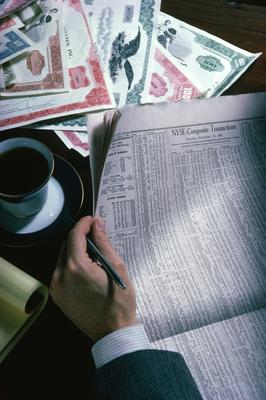|
The easiest stance may be to leave well enough alone, assume the creator of the portfolio knew what he or she was doing, and allow the accumulated holdings to merely stay in the accounts for the long-term. These assets likely will provide a decent overall total return in days ahead. One might therefore do better to resist one's own impulses or calls by others to cull from or cut down all of a still abundantly fruit-bearing financial orchard. Contrary to popular notions, when it comes to one's equities, doing nothing can frequently be the best solution. Suppose one already had in that nest egg, for instance, strong holdings like Berkshire Hathaway (BRK/A or BRK/B), Coca-Cola Company (KO), or International Business Machines Corp. (IBM). These would likely provide good growth of earnings and hence, sooner or later, of market price going forward. Were these coupled with 3-4 dozen good dividend providers acquired when among the better values for their yields, equities such as Aegon, N.V. (AEG), Apollo Investment Corp. (AINV), AstraZeneca, PLC (AZN), AT&T (T), Kohlberg Kravis Roberts and Company, L.P. (KKR*), Royce Value Trust (RVT), and Templeton Emerging Markets Income Fund (TEI), the combined portfolio might well offer all one could wish in terms of low maintenance performance as well as income. So why change it? resist one's own impulses or calls by others to cull from or cut down all of a still abundantly fruit-bearing financial orchard. Contrary to popular notions, when it comes to one's equities, doing nothing can frequently be the best solution. Suppose one already had in that nest egg, for instance, strong holdings like Berkshire Hathaway (BRK/A or BRK/B), Coca-Cola Company (KO), or International Business Machines Corp. (IBM). These would likely provide good growth of earnings and hence, sooner or later, of market price going forward. Were these coupled with 3-4 dozen good dividend providers acquired when among the better values for their yields, equities such as Aegon, N.V. (AEG), Apollo Investment Corp. (AINV), AstraZeneca, PLC (AZN), AT&T (T), Kohlberg Kravis Roberts and Company, L.P. (KKR*), Royce Value Trust (RVT), and Templeton Emerging Markets Income Fund (TEI), the combined portfolio might well offer all one could wish in terms of low maintenance performance as well as income. So why change it?
There may be good reasons, though, for redeeming some or all of those assets. Cash might need to be raised, an estate might have to be settled, the cost basis may have favorably changed at the death of one's spouse (so it is appropriate now to weed out long held and profitable shares that hitherto needed to be kept lest the sales add to taxes), one-time or ongoing gifts to relatives or friends could be desired, holdings might better be converted into more income producing investments, etc.
*Please note that KKR is a limited partnership, so if investing in it one may prefer to avoid some extra tax forms by holding this security in a tax-deferred account.
| |